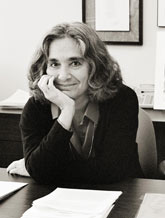
Handy Links
SLAC News Center
SLAC Today
- Subscribe
- Archives: Feb 2006-May 20, 2011
- Archives: May 23, 2011 and later
- Submit Feedback or Story Ideas
- About SLAC Today
SLAC News
Lab News
- Interactions
- Lightsources.org
- ILC NewsLine
- Int'l Science Grid This Week
- Fermilab Today
- Berkeley Lab News
- @brookhaven TODAY
- DOE Pulse
- CERN Courier
- DESY inForm
- US / LHC
SLAC Links
- Emergency
- Safety
- Policy Repository
- Site Entry Form

- Site Maps
- M & O Review
- Computing Status & Calendar
- SLAC Colloquium
- SLACspeak
- SLACspace
- SLAC Logo
- Café Menu
- Flea Market
- Web E-mail
- Marguerite Shuttle
- Discount Commuter Passes
-
Award Reporting Form
- SPIRES
- SciDoc
- Activity Groups
- Library
Stanford
Around the Bay
From the Director: The LCLS Users are Coming!

Even before the Linac Coherent Light Source achieved lasing, the first call for proposals for beam time went out. Twenty-eight proposals were submitted by 219 scientists from 16 countries to get beam time on the Atomic, Molecular and Optical science instrument in fall 2009. An external proposal review panel selected the 11 best proposals. Each experimental team is sending a team member to SLAC in July to participate in the commissioning of the instrument and there will be first beam to the users in September.
The second call for beam time proposals just closed. In this second round, 62 proposals were submitted by 469 scientists from 15 countries to get beam time on AMO and the second experiment, the Soft X-Rays Materials Science instrument, which will come live in March 2010. These are astonishing numbers for a facility that will not even be completed and officially operating until summer of 2010! It appears that before ever delivering an X-ray pulse to a user, the LCLS is oversubscribed by a factor of 2-3. I believe we can attribute this tremendous growth in proposals partly to the additional instrument, but also to the excitement that has gripped the science world since news of successful lasing spread through the community in April.
There are many interesting observations to be made about this new LCLS user community. For example, the experimental teams are larger than those historically using synchrotron facilities. We can speculate that more collaborative efforts are being proposed for LCLS because beam time is limited and through next summer only two experiments will be operating. We also see the driving need to increase capacity and serve more users because the demand for beam is certainly there.
It is clear that between now and next summer (project completion), more than 200 scientists will be taking advantage of this spectacular beam. As we turn our focus towards science delivery, it is wonderful to see such strong interest from the scientific community. It is our responsibility to do everything we can to ensure they are able to get the data that they need and have the necessary tools to analyze it. The research environment we create for users at SLAC should allow them to quickly and efficiently turn their data into science results. The world is watching.
